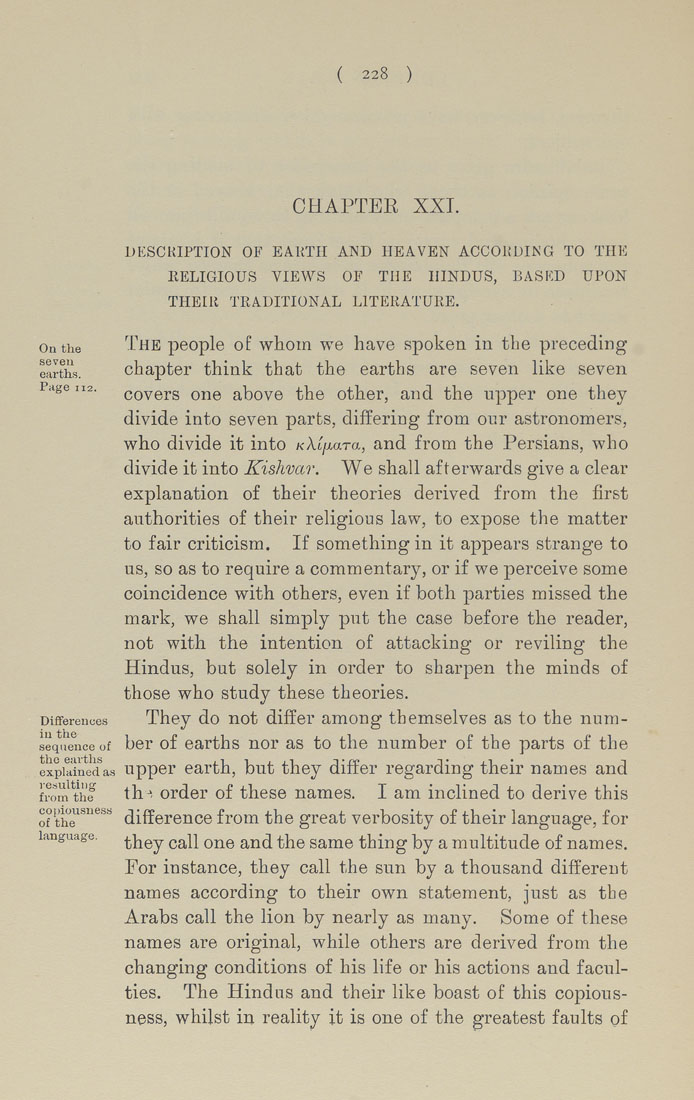Bīrūnī, Muḥammad ibn Aḥmad, Alberuni's India (v. 1)
(London : Kegan Paul, Trench, Trübner & Co., 1910.)
|
||
|
|
|
|
| Page 228 |

( 228 ) CHAPTER XXI. DESCRIPTION OF EARTH AND HEAVEN ACCORDING TO TIIE EELIGIOUS VIEWS OF THE HINDUS, BASKD UPON THEIR TRADITIONAL LITERATUKE. Onthe seven earths. Page 112. Differences in the sequence of the earths explained as resulting from the co[)iousness of the language. The people of whom we have spoken in the preceding chapter think that the earths are seven like seven covers one above the other, and the upper one they divide into seven parts, differing from our astronomers, who divide it into /cAt/xara, and from the Persians, who divide it into ICishvar. We shall afterwards give a clear explanation of their theories derived from the first authorities of their religious law, to expose the matter to fair criticism. If something in it appears strange to us, so as to require a commentary, or if we perceive some coincidence with others, even if both parties missed the mark, we shall simply put the case before the reader, not with the intention of attacking or reviling the Hindus, but solely in order to sharpen the minds of those who study these theories. They do not differ among themselves as to the num¬ ber of earths nor as to the number of the parts of the upper earth, but they differ regarding their names and th^- order of these names. I am inclined to derive this difference from the great verbosity of their language, for they call one and the same thing by a multitude of names. For instance, they call the sun by a thousand different names according to their own statement, just as the Arabs call the lion by nearly as many. Some of these names are original, while others are derived from the changing conditions of his life or his actions aud facul¬ ties. The Hindus and their like boast of this copious¬ ness, whilst in reality it is one of the greatest faults of |
| Page 228 |







